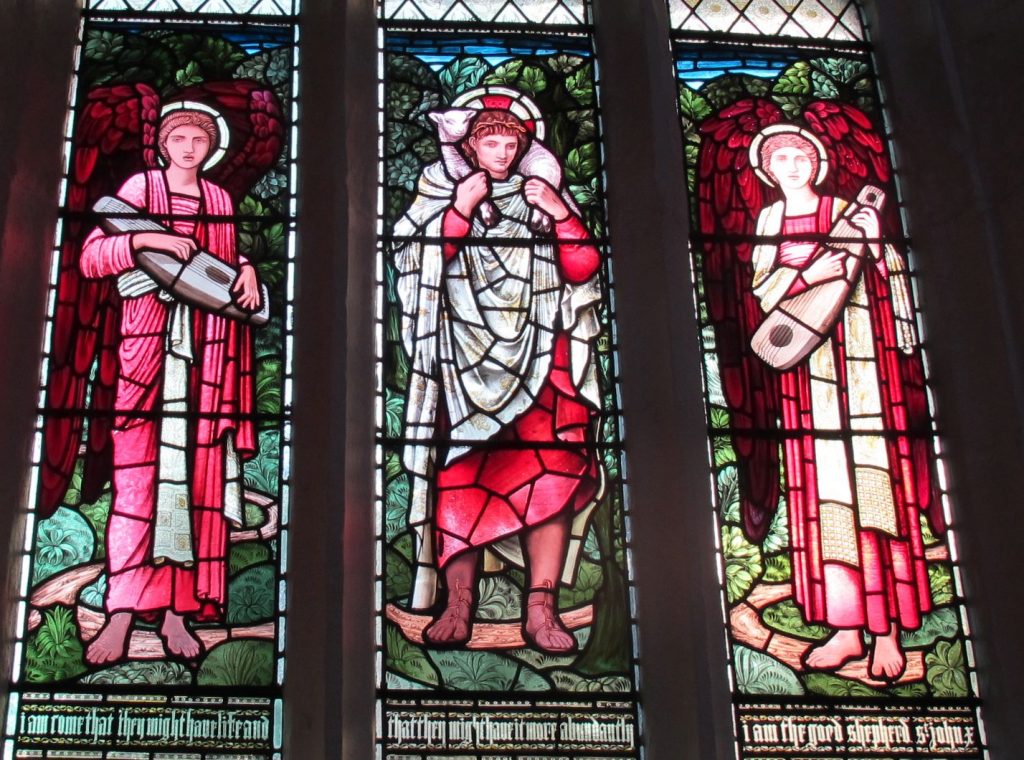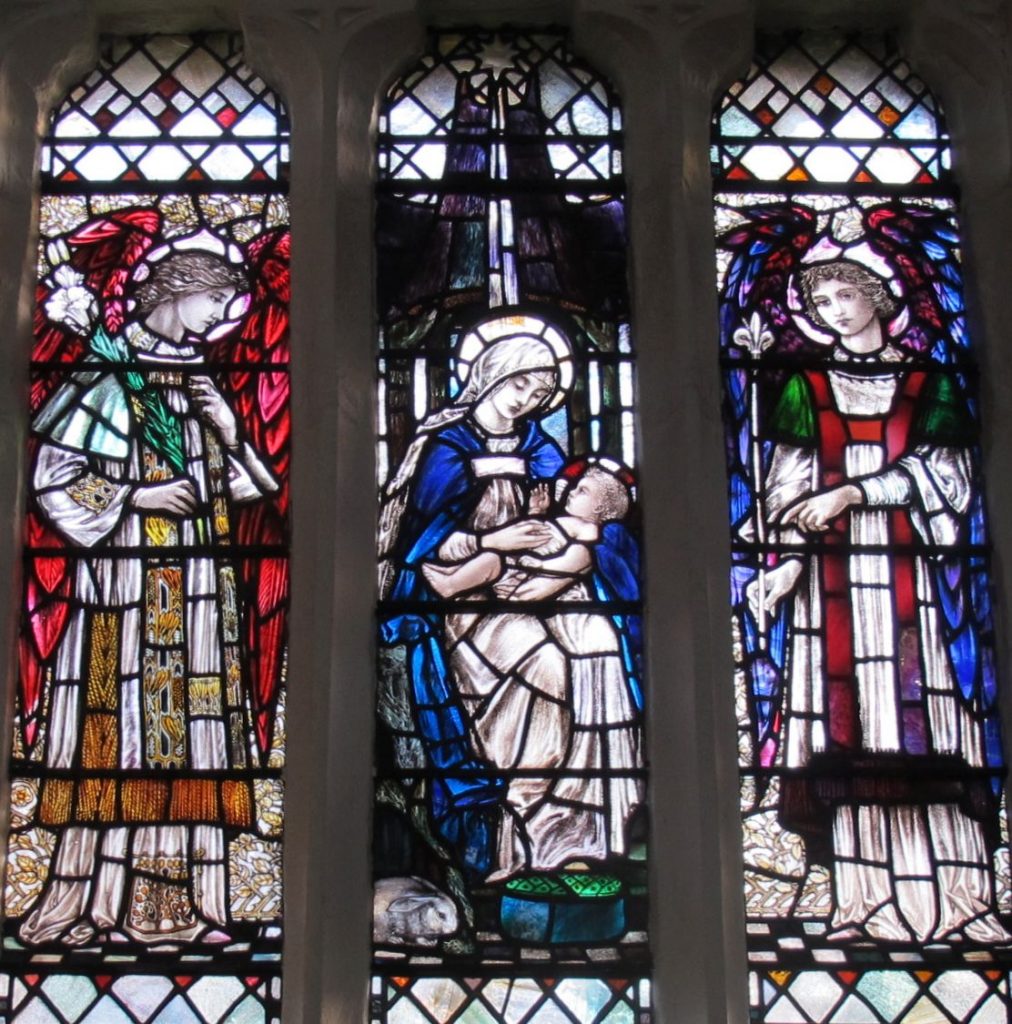
Artist: Edward Burne-Jones. Photo (C) Stephen Craven
Today’s Antiphon is ‘O clavis David’ (clavis=key). One English translation of the full text is ‘O key of David and sceptre of Israel, you who open and nobody then can close, who close and nobody then can open: come and lead the captive from prison; free those who sit in darkness and in the shadow of death’. There are many people in literal prison cells, or in ‘prisons’ of their other circumstances, for whom we could pray as we read this.
The ‘O antiphons’ are usually rendered as plainsong, but today’s hymn from Sing Praise is the well known worship song ‘The Lord’s my shepherd (I will trust in you alone)’ by Stuart Townend. The connections with the antiphon are that David was a shepherd before he became King, and Psalm 23 of which it is a setting also talks of the ‘shadow of death’.
This modern setting of the psalm has achieved great popularity, although it takes the verses of the psalm in a different order from the original, and oddly doesn’t seem to include the last verse – ‘I will dwell in the house of the Lord for ever’. Perhaps that’s because of its refrain ‘I will trust in you alone’ which has a pleasant descant line.
By coincidence I’ve been able to illustrate two posts this week with stained glass from the same church. Whalley has a real treasure in these windows by Burne-Jones and Whall, two of the masters of their craft.
